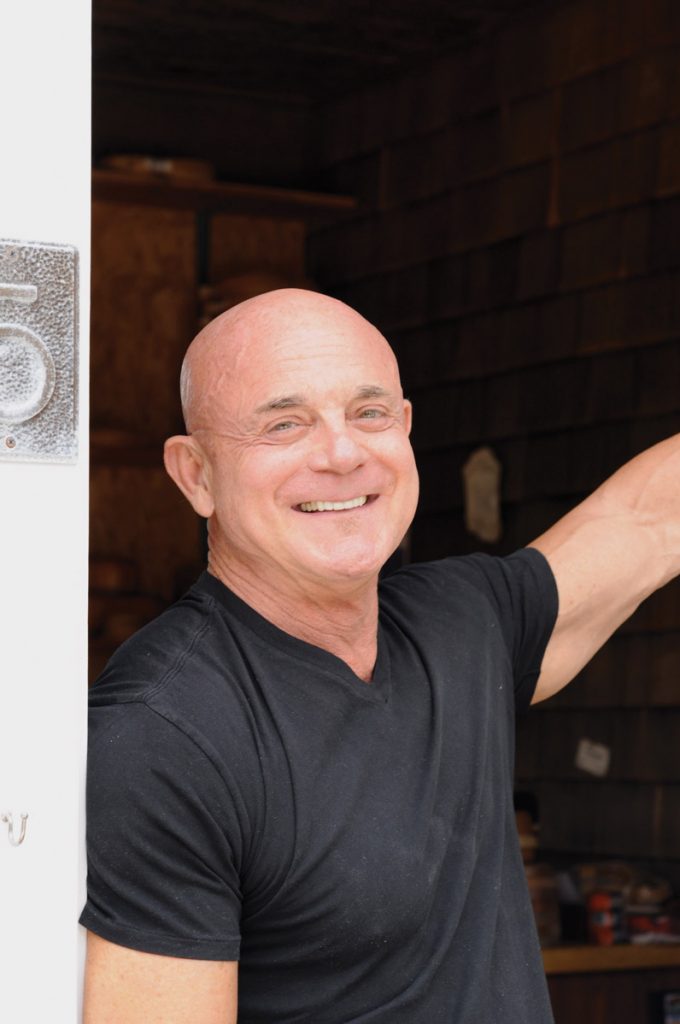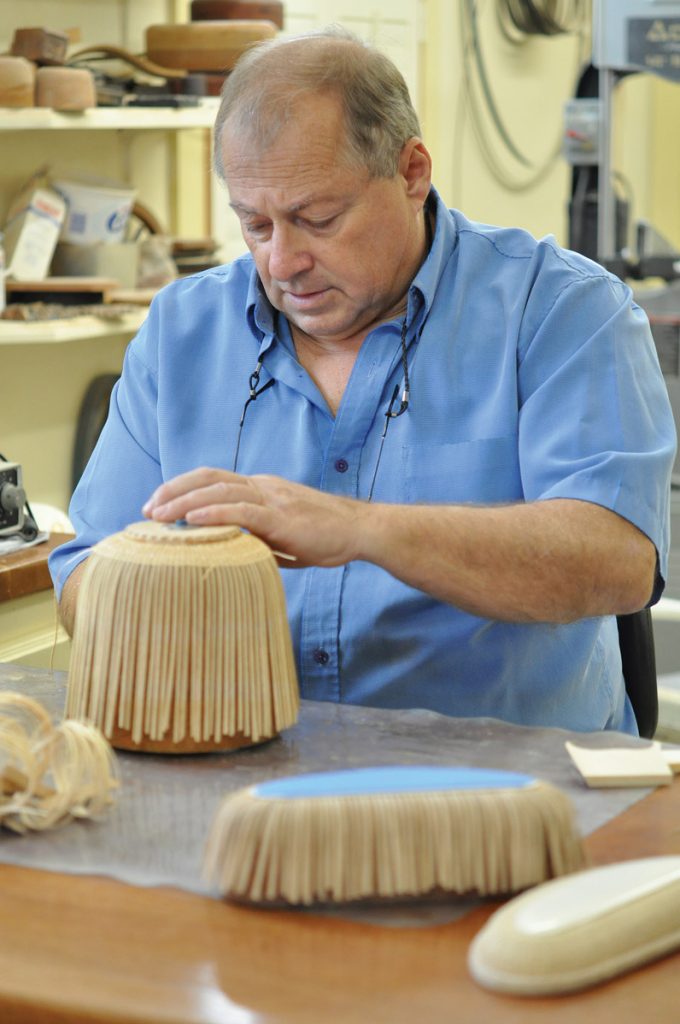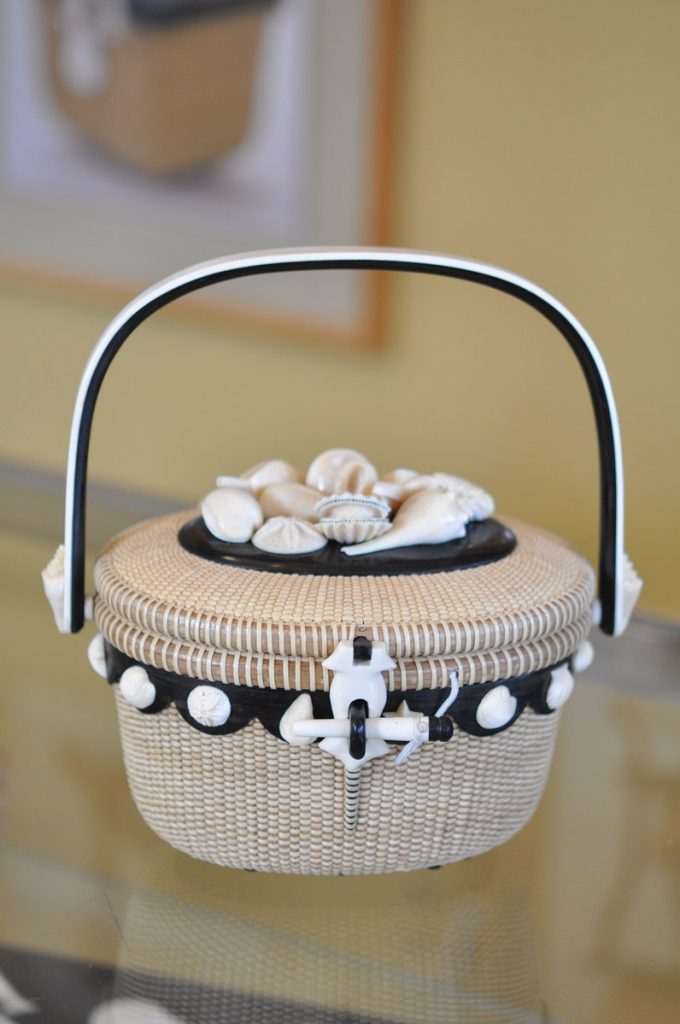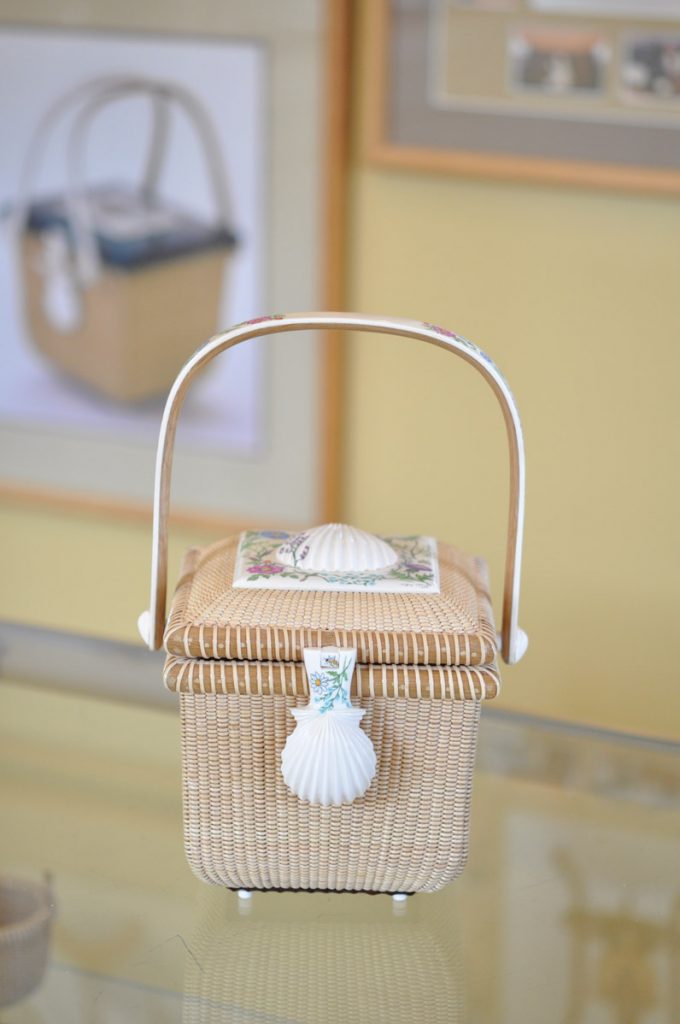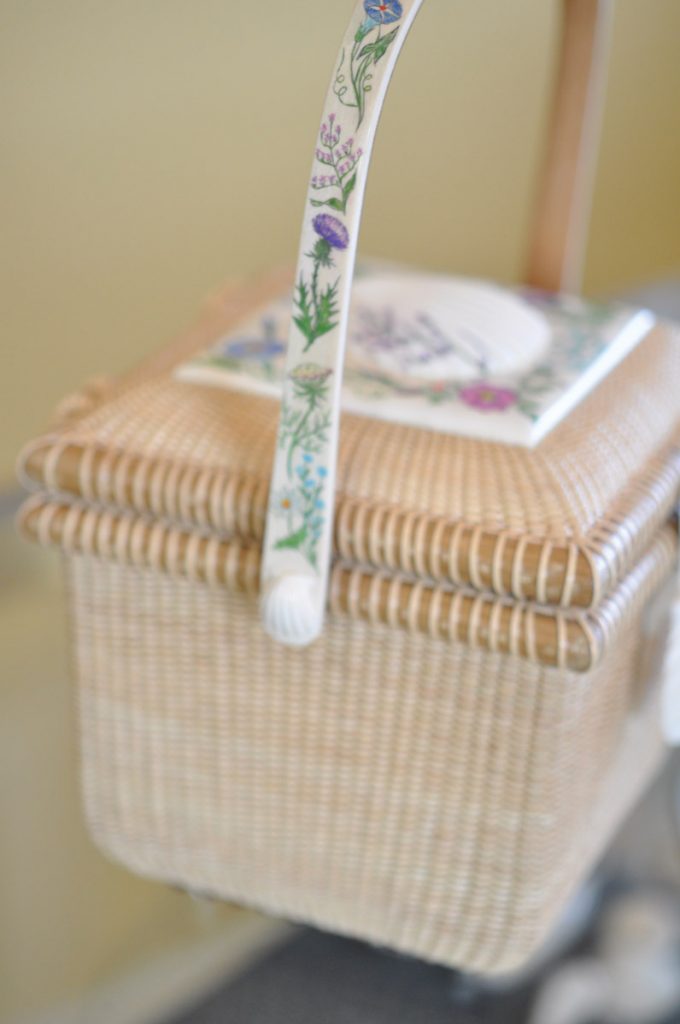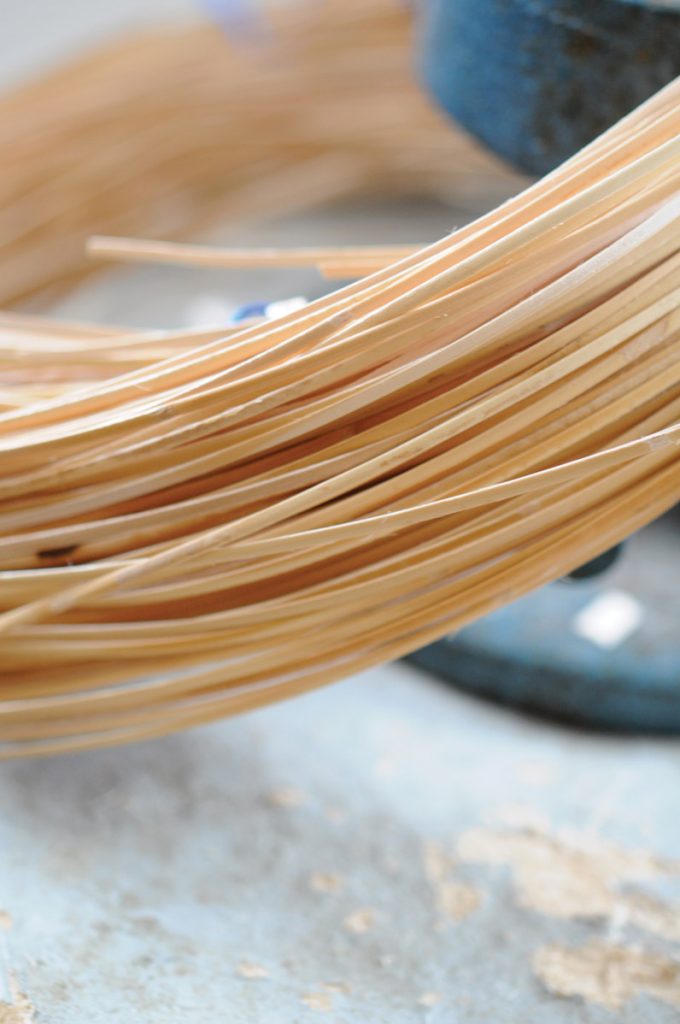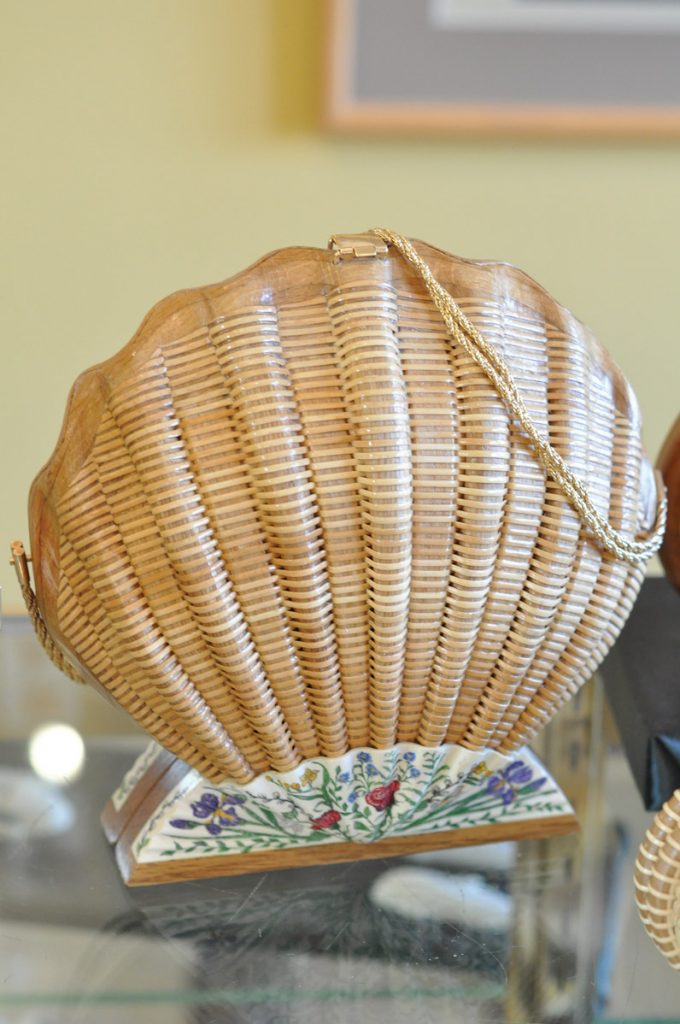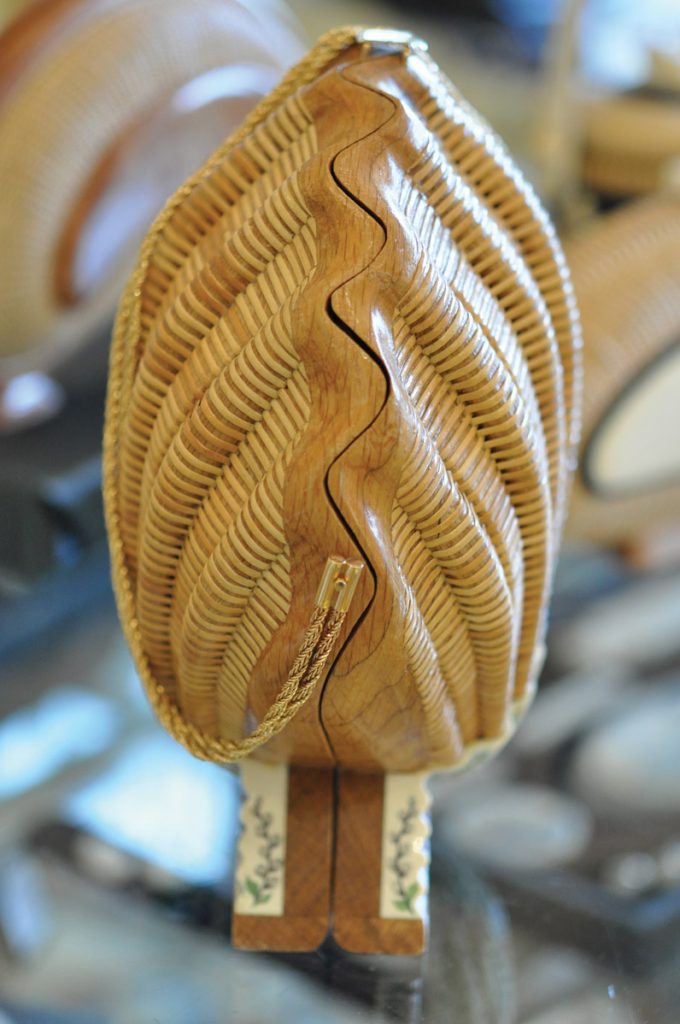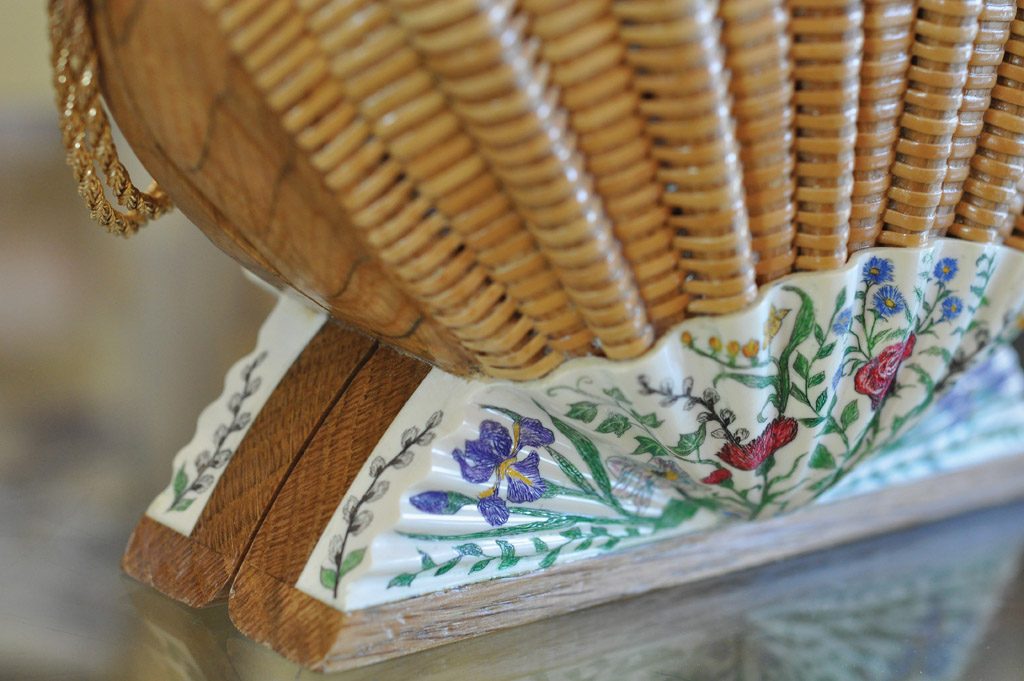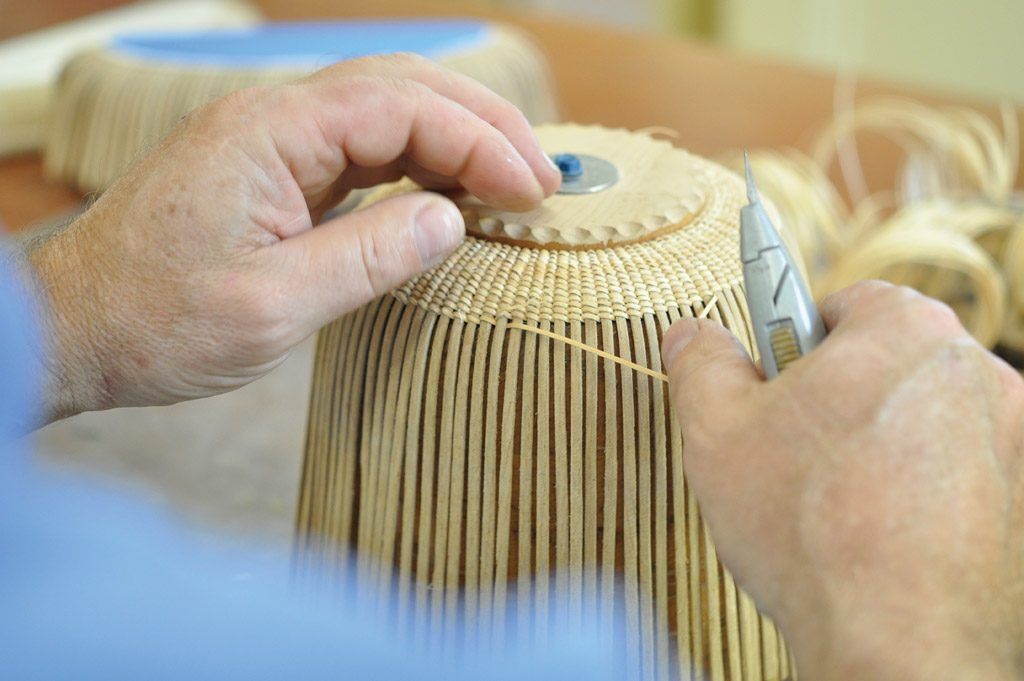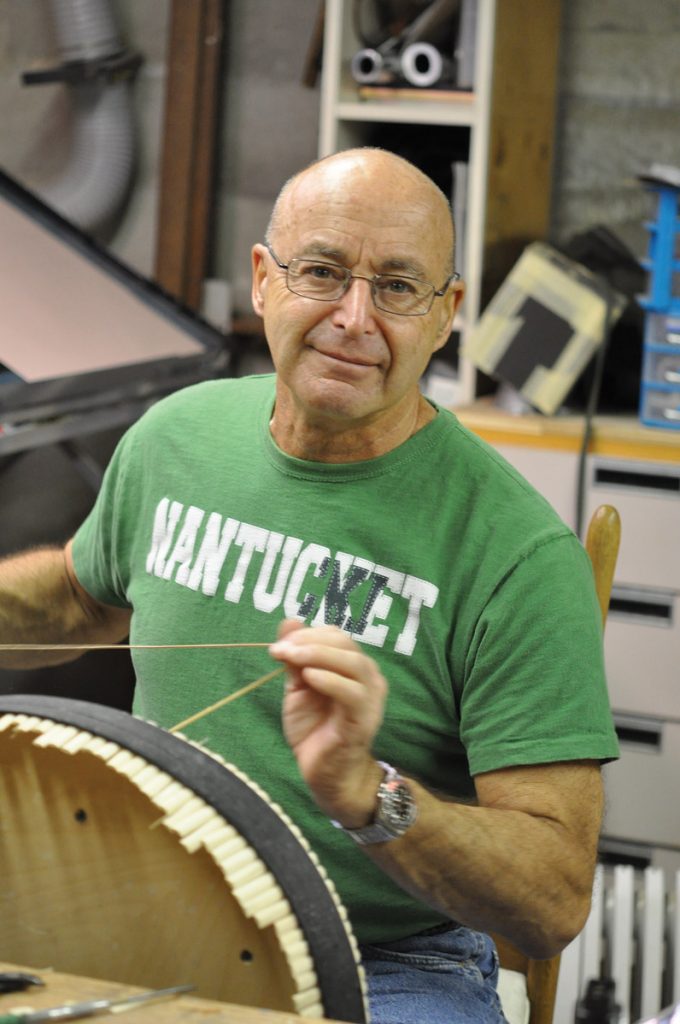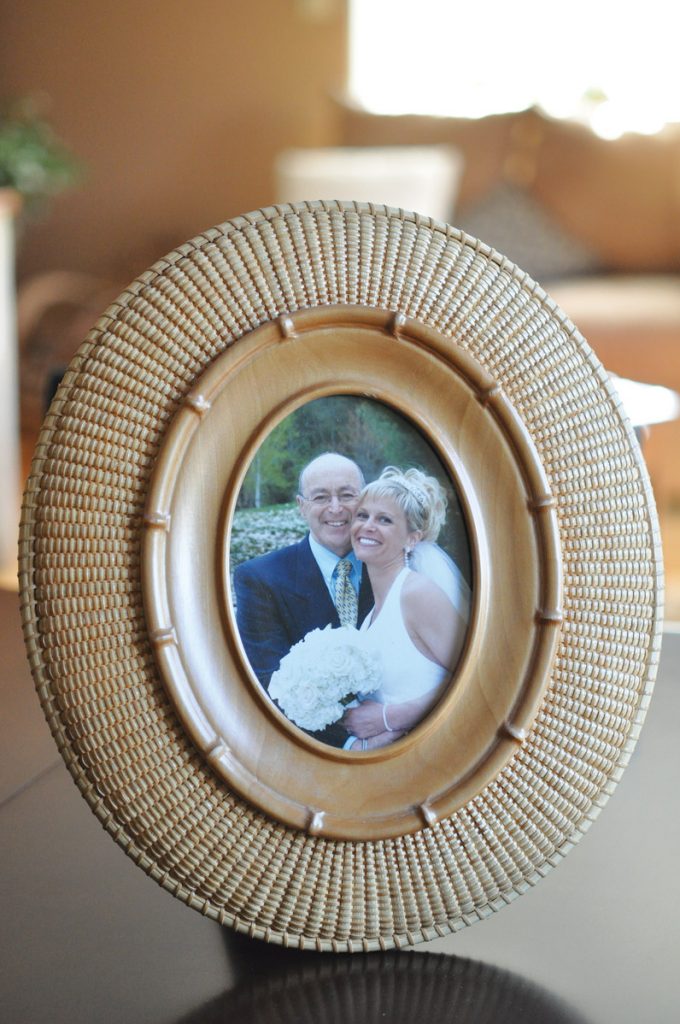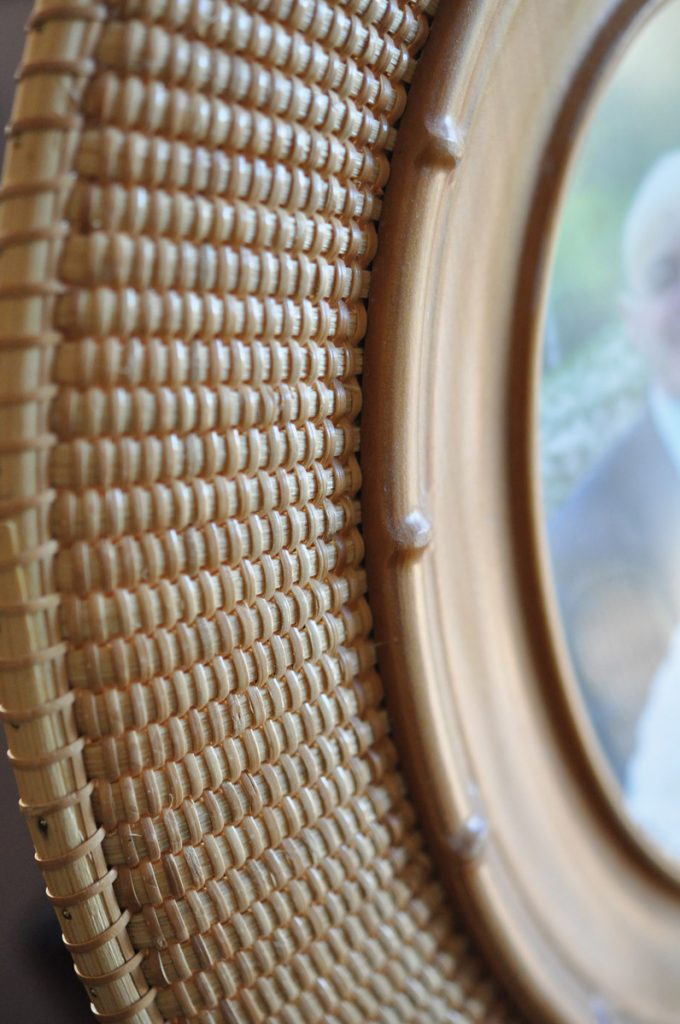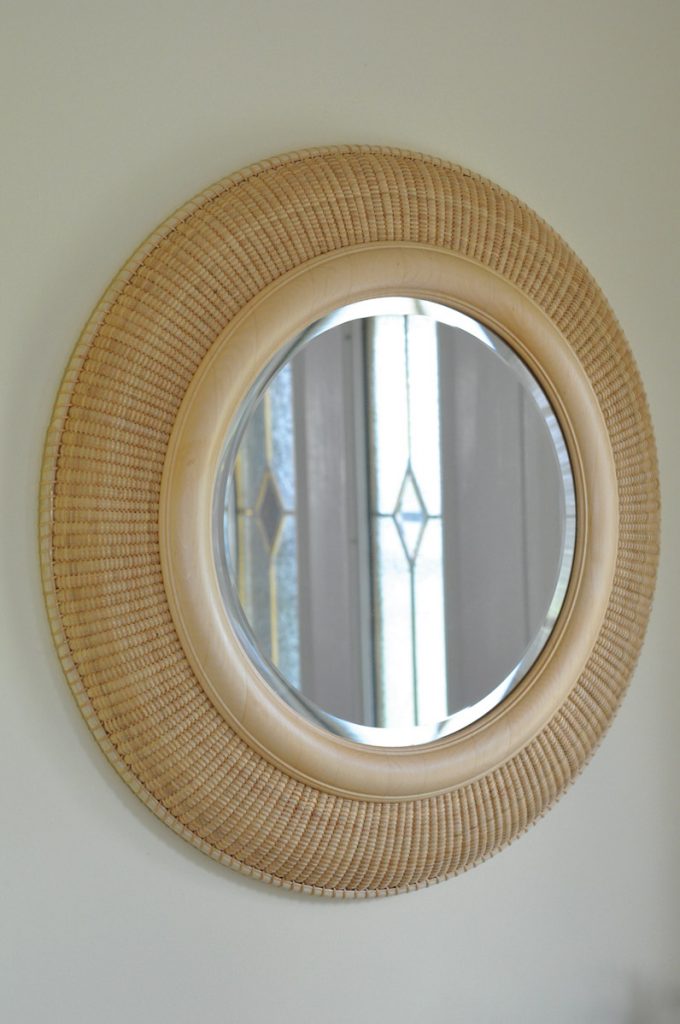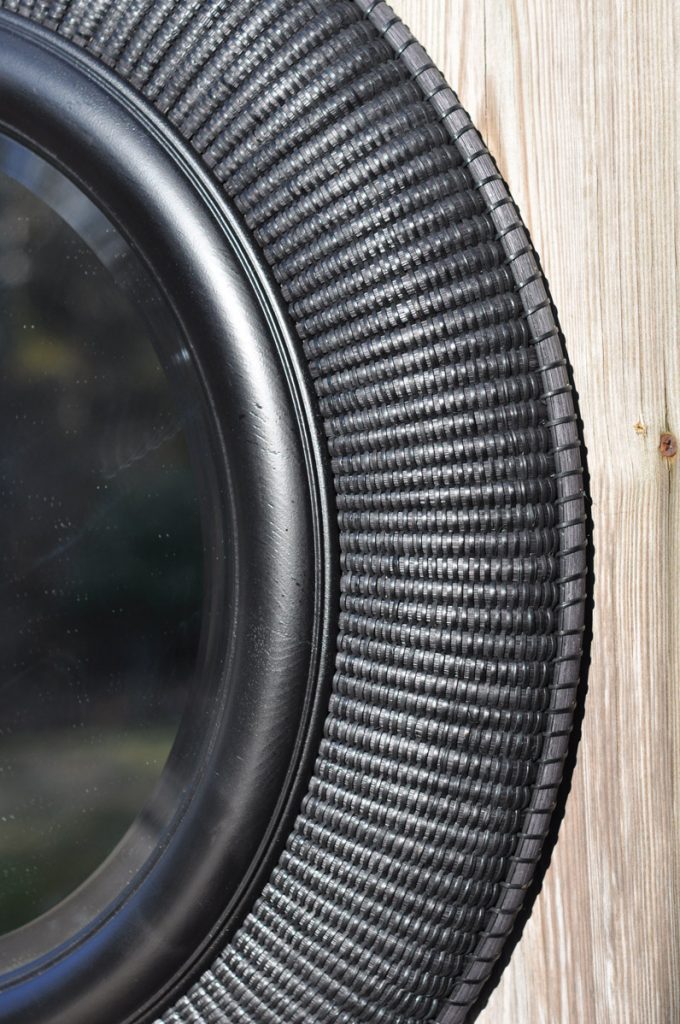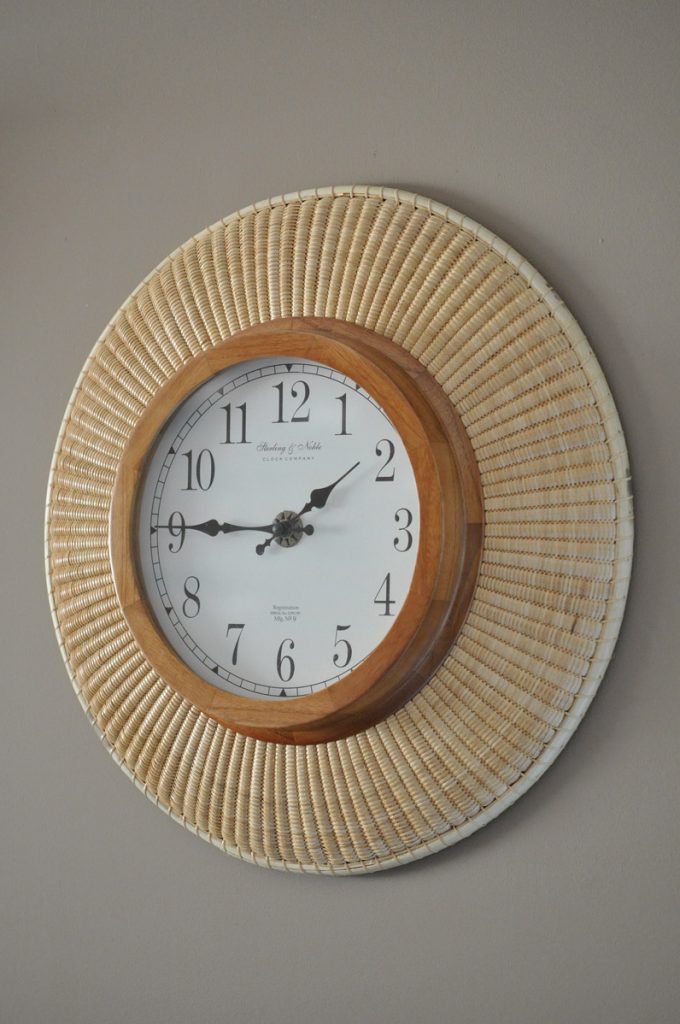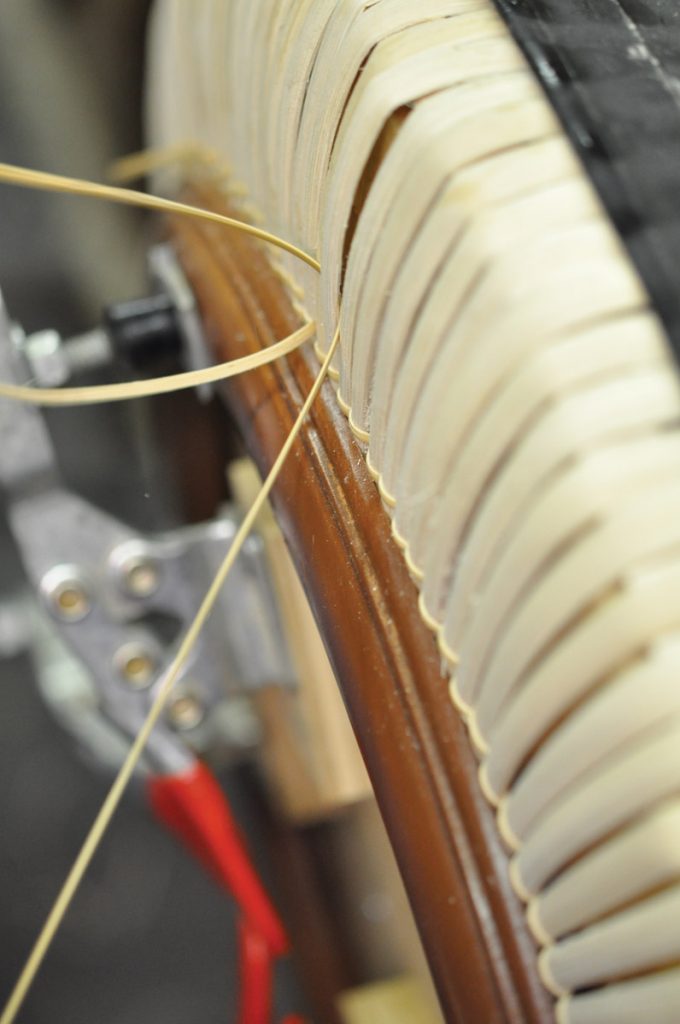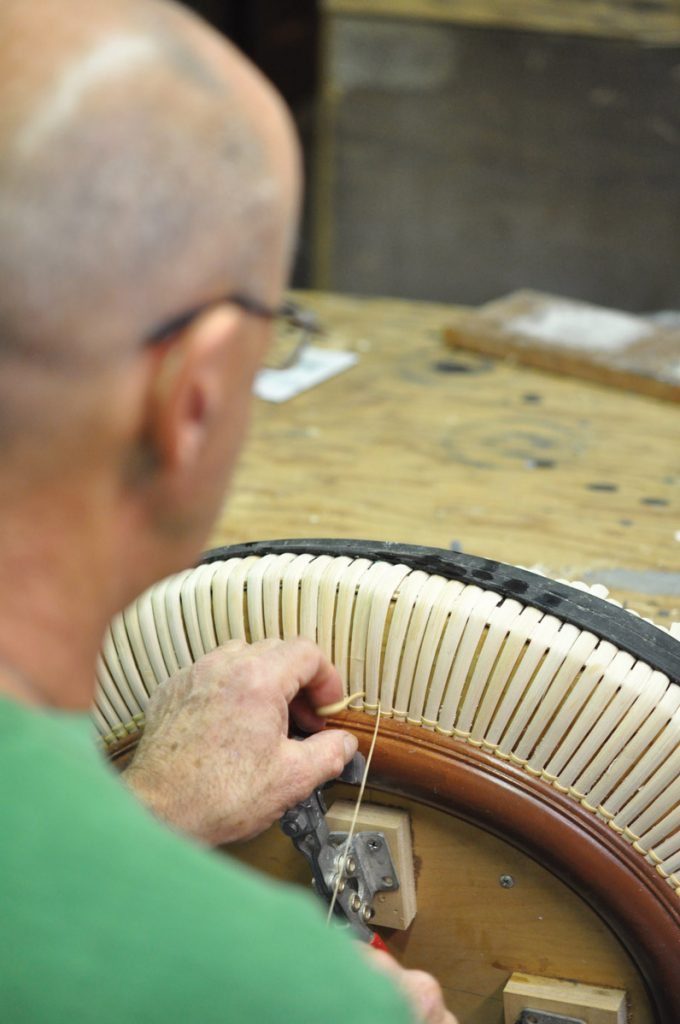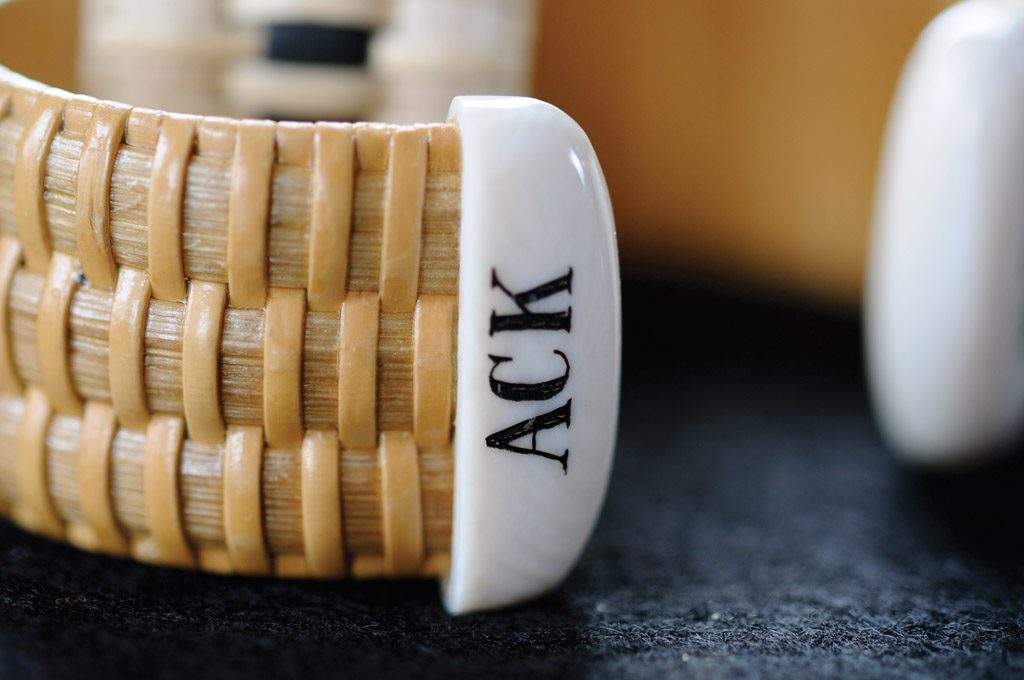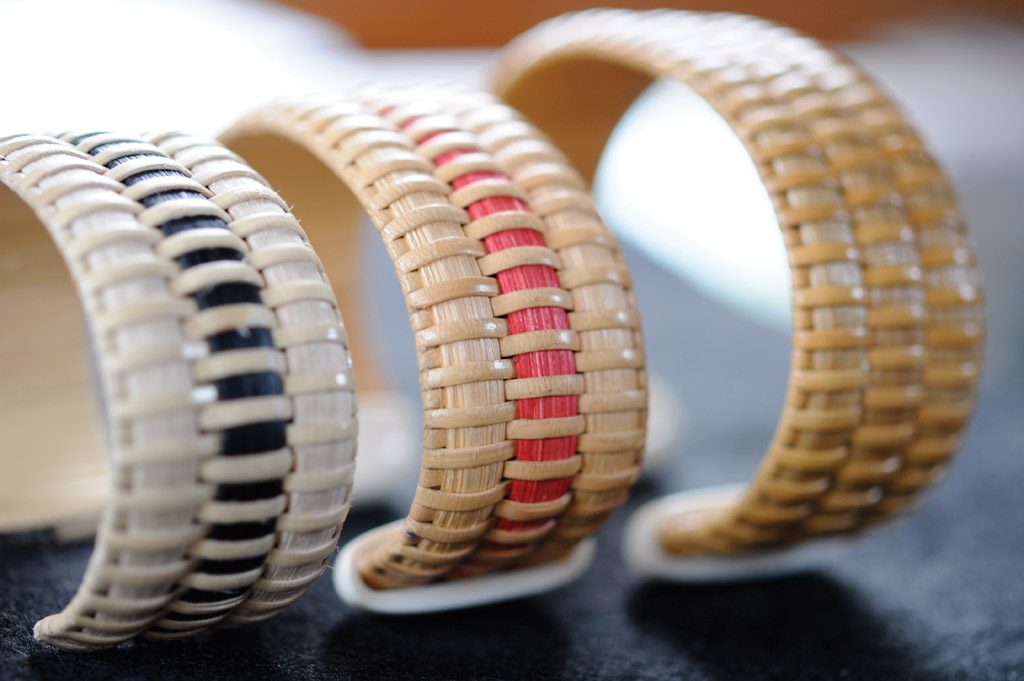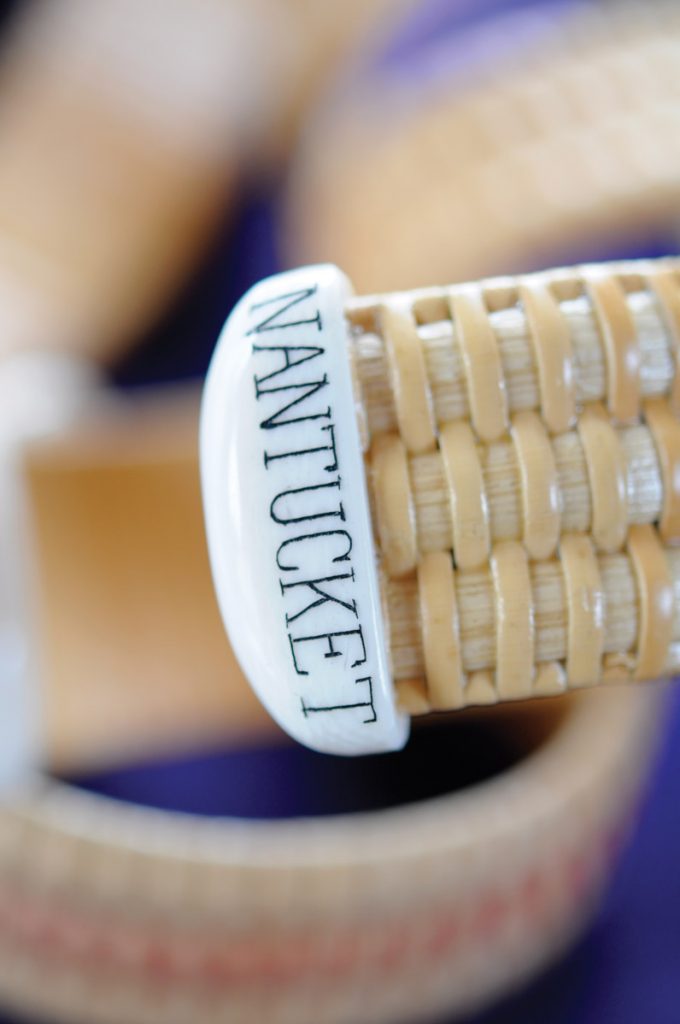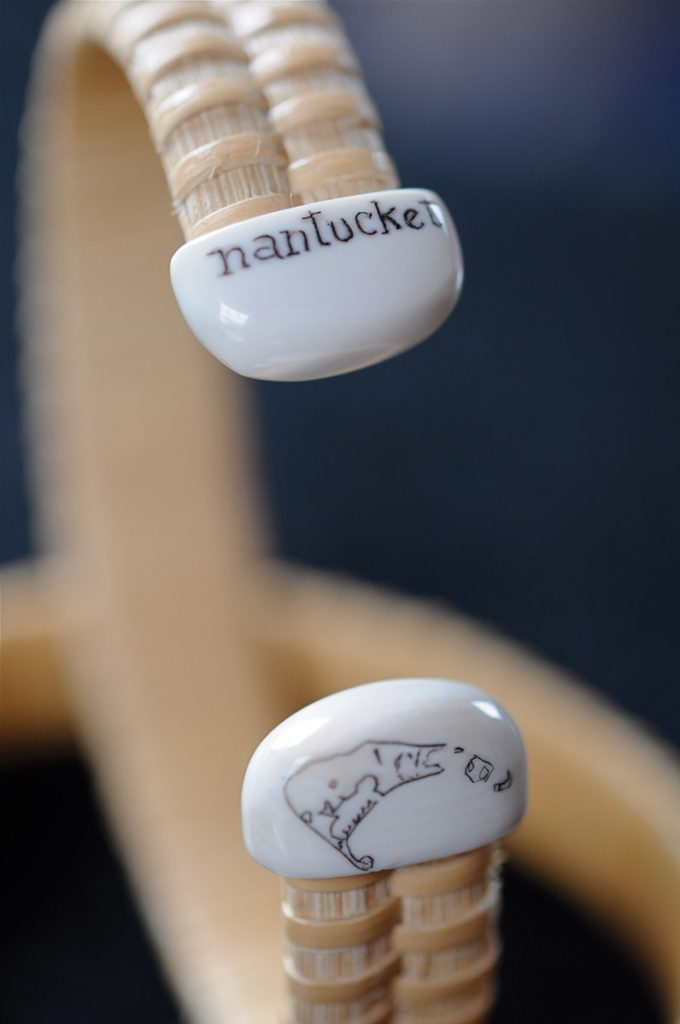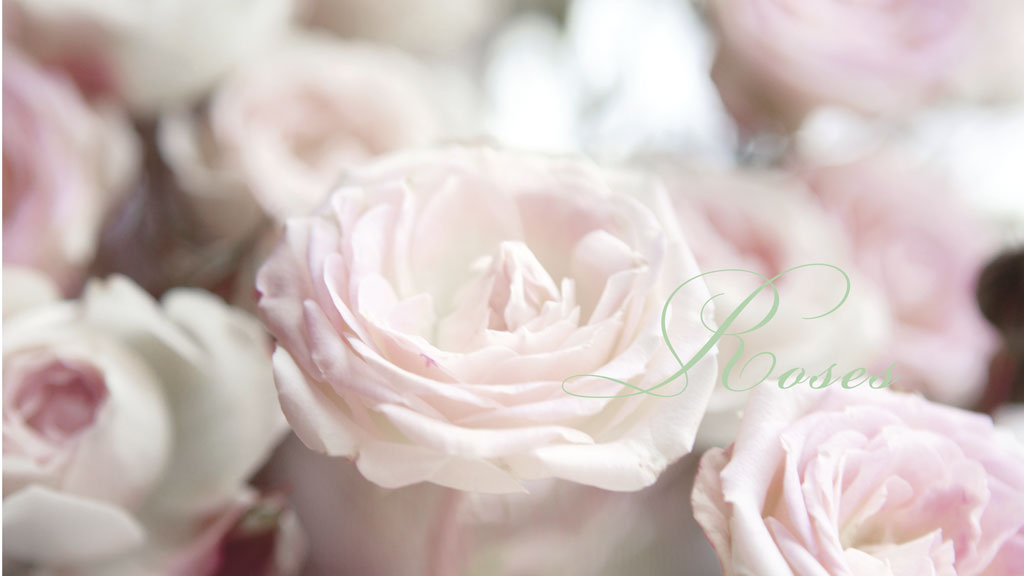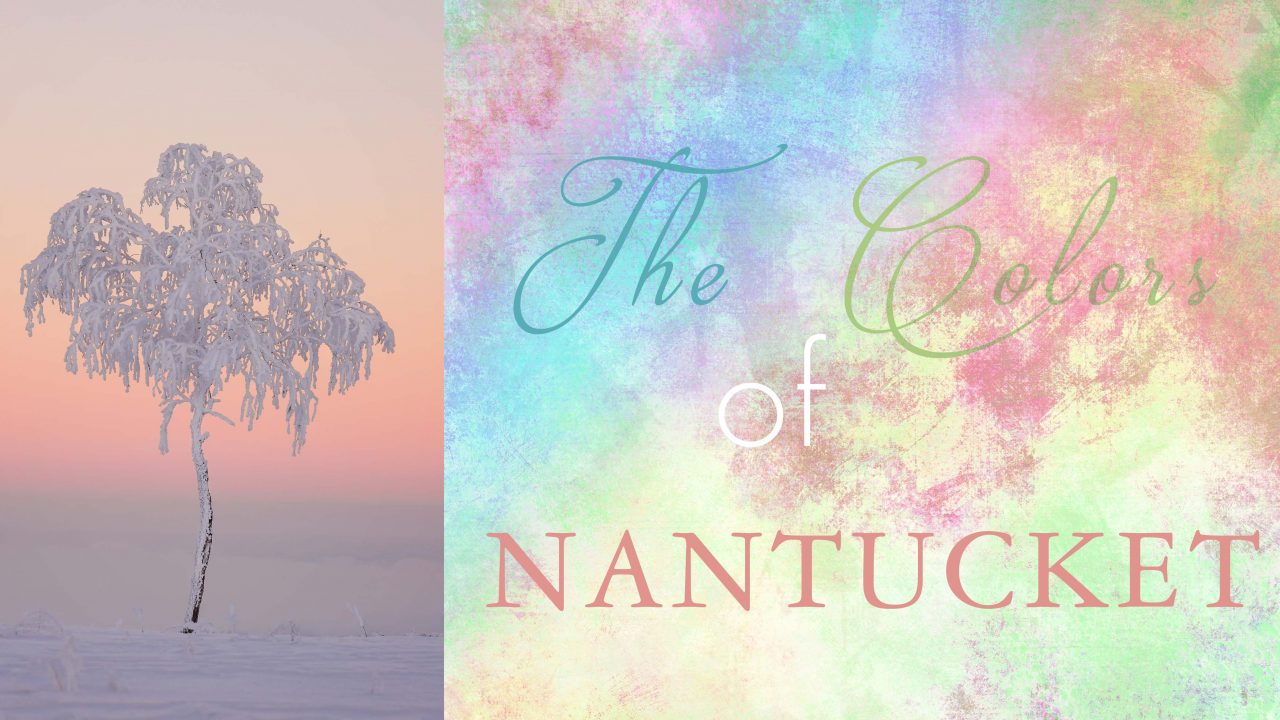Cherished Art
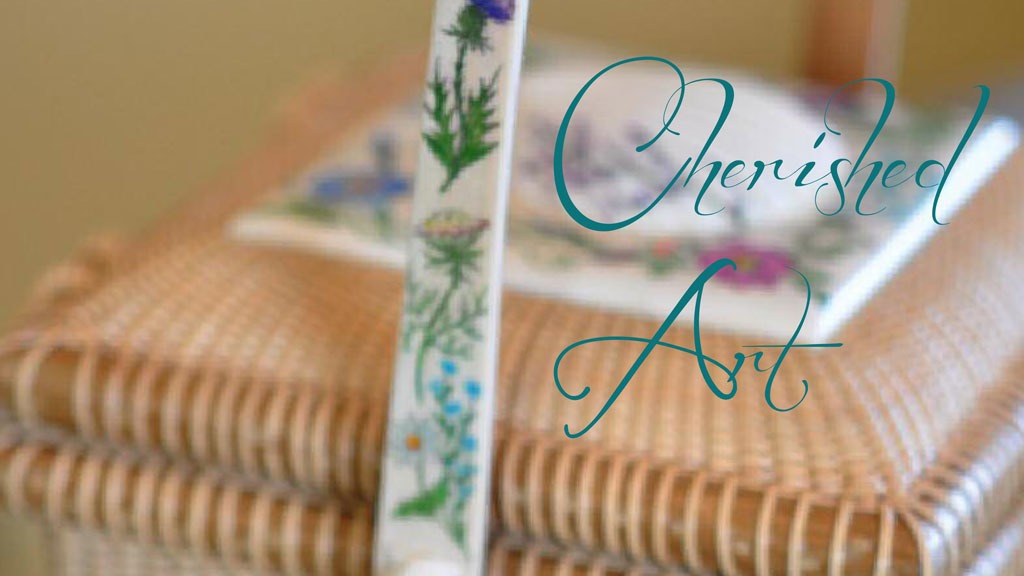
by Debra Klingsporn
Photography by Julie Almand
In the mid-1800s, lightships were commissioned to alert other ocean-going vessels to the dangerous shallows and shoals surrounding Nantucket Island. Those who served on the lightships found themselves stationed 50 miles offshore with too much time and too little to do. With a ready supply of rattan from whaling ships returning from voyages to the Pacific, the art of weaving baskets on board was born and continued uninterrupted until the early 1900s, when the government brought an abrupt end to the basket weaving by categorizing the craft as “moonlighting.” As history goes, the lightship came and went, but the art and craft of the lightship basket took on a life of its own. Boredom aboard a boat yielded an art that continues to be one of Nantucket’s most enduring traditions.
Nantucket has a way of changing the way we see things. Spend a few hours or a few days here, and the world begins to feel like a different place. Only on Nantucket do people routinely walk in the streets and drive on the sidewalks. Only on Nantucket is the singular stop light found in a car wash, not at an intersection. And only on Nantucket does an activity designed to relieve boredom become a cherished art form.
Like weathered gray shingles and cobblestone streets, the venerable lightship basket emerged from humble beginnings. Today nothing is more uniquely Nantucket than these distinctive baskets.
Although the basic form and structure is easily copied and frequently reproduced, nothing compares with the quality of workmanship, artistry, and attention to detail developed by a short list of local basket makers who have been at their craft for literally decades. Quite simply, few today can top the artistry of local basket makers.
MICHAEL KANE
Michael Kane has been making baskets since he was 13 years old. He left the Island to go to college and never quite finished that accounting degree. He came home to Nantucket after his third year, started making baskets again and never quit. He still uses a few antique molds that some elderly basket makers gave him when he was a kid. He still works with oak, planing, soaking, bending and steaming it onto the molds, and he does his own hand-carving of ivory.
“I put the time into my work,” Michael says. “Early on I decided I wanted to do the finest work I could do. An oak basket is harder and takes more time, but using oak is the only way to make a real lightship basket.”
Michael has never deviated from a simple determination to make only the best. He’s typically in his studio by five in the morning and doesn’t leave until perhaps six in the evening — every single day. He’s worked with the same scrimshander for 35 years, Dorothy Grant O’Hara, the great-great-granddaughter of whaler Bill Grant. Michael wouldn’t use anyone else.
He does, however, now work with someone else in basket making. Four years ago his son, Will, came back to the Island after working as a welder and wanted to try making a basket. “He’s going to be one of the best basket makers ever,” Michael says. “I’m really hard on him. He’s good, he’s really good. He tried it when he was younger and didn’t have the patience for it, but when he came back to the Island and wanted to try it again, he fell in love with it. Will is the first third-generation basket maker.”
Now father and son basket makers are creating heirloom pieces for multi-generational customers. “A mother who bought a basket years ago now has a daughter who is having kids, and they now come in,” Michael says. “I do have a lot of loyalty in my customers.”
“A few years ago one of my customers came in and told me she had been standing in Tiananmen Square in China when another woman walked up to her and said, ‘Michael Kane?’ Both of them were carrying their Nantucket lightship baskets and both were ones I had done. I thought, ‘Wow!’”
A typical basket takes Michael about 70 hours to complete, but the one he considers his signature piece was four years in the making. “The Last Dance,” a fully functional, two-tiered sewing basket, stands 4 feet and 5 inches tall and boasts more than 400 hand-carved parts, 3,281 feet of cane and 65 pounds of lead weight in the hand-carved mahogany base. This lavishly exquisite work has been displayed in museums, profiled in countless publications and articles, and in September 2007 took him to the “Martha Stewart Show.”
“I told Martha I was like a kid in a candy store!” Michael says with a robust laugh. “The audience was filled with my customers. I thought it was a blast. I love what I do. I can’t think of doing anything else.”
Michael Kane’s impact on the art and craft of Nantucket lightship baskets is legendary, right along with many of his customers. From Frank Sinatra to Jacqueline Onassis to political dignitaries and Forbes top 100 wealthiest, those who want only the best find their way to Michael Kane’s studio.
Since the days when weaving baskets moved off the ships and back on Island, the traditional lightship basket has come a long way. Innovations, distinctive designs and unparalleled workmanship are all reasons Martha Stewart credits Nantucket with “producing the finest hand-woven baskets.” But creativity breeds creativity. Innovation begets innovation.
RITCH LEONE
A shop teacher at the high school for 35 years, Ritch Leone had a mirror cut to sit inside a basket tray he had made. While viewing the mirror on the bottom of the tray, the idea came to him. Why not buy a mirror and see if he could create the weave around the mirror frame? A simple idea in a random moment gave him a whole new secondary career.
After a few trials and more errors, Ritch became the creator of the lightship basket mirror frame and continues to be the only one who makes them.
“I’m really doing something no one else does,” Ritch says as we order our favorite brew and find a table at The Bean. At least half-a-dozen customers coming in and out of the sunlit coffee shop on Centre Street take time to greet Ritch and visit a few minutes. Seems like everyone knows Ritch Leone.
“When I came to Nantucket it was for a one-year job,” Ritch says with a chuckle. “I was hired to teach wood shop, but it was a joke. We had no wood. No tools. And I had the entire football team. So I started to talk with them. Started asking questions. I don’t think I was a great teacher. I was a guidance counselor. Those guys just wanted to be heard.”
But Nantucket has a way of winning you over. Ritch became actively involved in theater on the Island. Bought some land. Built a house. Nearly 40 years later, Nantucket is home.
This high-energy retired teacher, woodworker, artist, jewelry maker and part-time FEMA coordinating officer says he lives like a troll because he spends so much time in his “dungeon.” He’s burned through three Keurig® coffee makers, works out every day and walks on the beach to gather his thoughts.
As with other high-end baskets, a mirror easily takes a month or more to complete. He makes all his own molds and constantly works to create new designs.
He uses pine, cherry, maple, ash and the traditional oak. His latest designs involve dyeing the reeds black, which leaves his hands black for weeks.
“It’s really what I enjoy doing,” Ritch says. “I used to keep track of how many I made. I’d put a mark on the mold. One mold I know had 17 marks, but now I’ve lost track.”
He may have lost track of how many he’s made, but chances are, if you walk into any number of lovely Nantucket homes, you’ll see one of his mirrors hanging in a place of prominence.
Yes, Nantucket does have a way of changing the way we see things. From turning a basket upside down and seeing the potential for a distinctive mirror to an accounting major deciding he’d rather spend his life making baskets, only on Nantucket could these four men come from such different paths to a shared passion for wood, reeds and keeping a Nantucket tradition alive. As basket-maker Nap Plank said so aptly, “Anywhere else I’d be unemployable.”
PETER FINCH
Just off Vesper Lane, you will find Polliwog Pond Road. It is one of Nantucket’s quiet residential areas filled with lush greenery, perfect for an evening stroll. Part way down the road, nestled into a corner lot is the home and shop of Peter Finch. As I walked up to the door of his shop, I could hear the calming sounds of classical music wafting out through the windows.
Peter was at his piano and hadn’t realized that I had arrived until he had finished playing the piece. I was surprised by his appearance, as I was expecting a little old man with glasses hanging off his nose, not the nationally ranked body builder who stood smiling before me.
Peter started coming to Nantucket in 1993, and like so many others who can identify with him, something about Nantucket stuck with him, and he stayed. It didn’t take long for him to discover the fine art of basket weaving. He started working with established basket makers Dick and Donna Cifranic, learning the nuances of this fine art. He was quick to tackle the difficulties of weaving, and only two years later he began making and selling baskets under his own name.
As the styles of lightship baskets have evolved to incorporate all shapes and sizes, so has Peter’s skill and his baskets. Looking around his shop, there are dozens of molds used to begin a basket, and to my untrained eye, most of them looked like they were all basically the same. I couldn’t have been more wrong. Each mold has a different shape and size, making each unique.
Peter was thrilled to be working and making a name for himself in such a highly regarded cottage industry, but the more he thought about his products, he was longing for something more. He started off by taking what he thought would be a logical step – sharing his knowledge about lightship baskets with others. In 1997, he began teaching classes to anyone who was willing to learn, which he still teaches to this day.
While simultaneously teaching classes and still delivering products to his customers, Peter still felt that something new had to happen in the industry. He thought back to José Reyes and his revolutionary idea that put a closed top on the lightship basket, thus turning it into a purse and making it a highly sought-after accessory. Since then, as a few creative artists made changes to the baskets industry, Peter embarked on a nearly four-year process, which resulted in his original product that he calls the BrACKlet.
The BrACKlet is a lightship basket-inspired bracelet. They are three staves wide and range in size. Every bracelet has customized ivory end caps, on which anything can be scrimshawed, from initials to special dates, and even images of the Island. His demand was so high, and reception was so positive, that he expanded the brand, and the BrACKletta was born. It is the same style, but instead of being three staves wide, there are only two. To further accent both styles of bracelet, he offers the option to add colors to a weave to make it bolder, more personalized and unique.
It has been a while since there has been a new idea contributed to the vast world of lightship baskets, but Peter has found that his creative gears have started moving once again. In regards to his newest idea, he says it is in the works, but as to the specifics, his lips are sealed.
